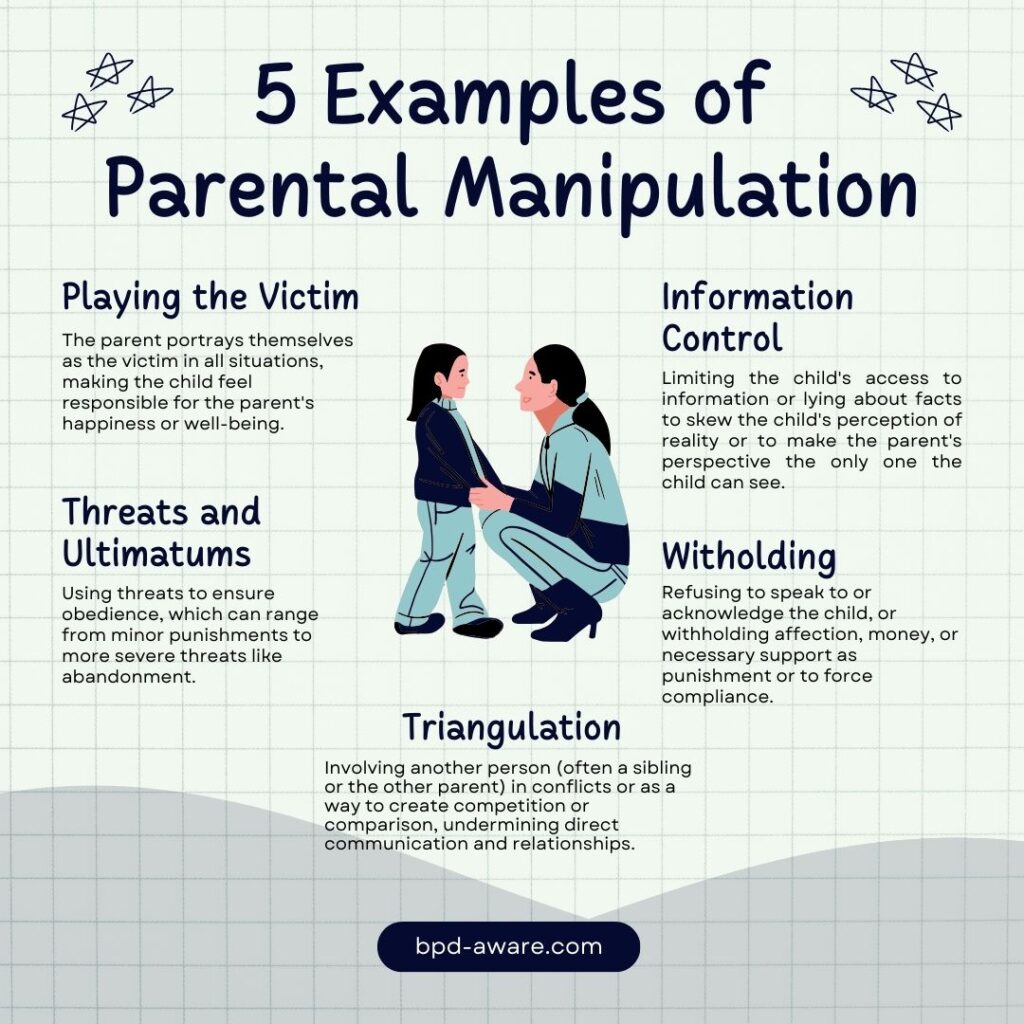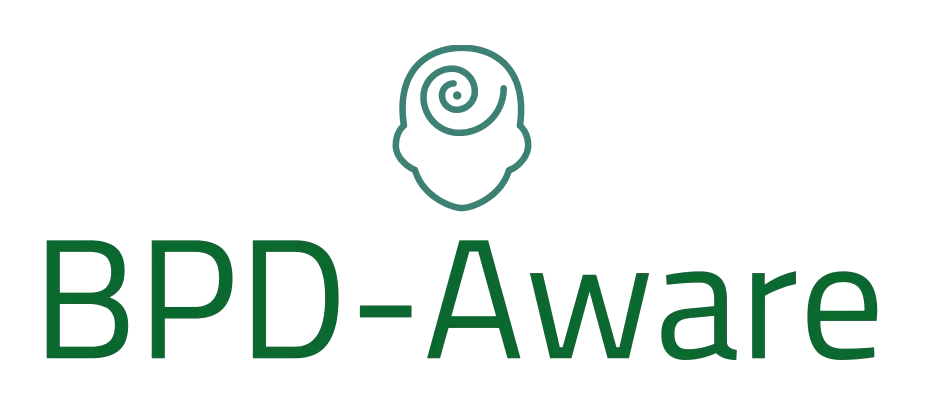Borderline Personality Disorder (BPD) is a complex mental health condition characterized by intense emotional instability, fear of abandonment, and difficulty in maintaining stable relationships. While the origins of BPD are multifaceted, involving a combination of genetic, environmental, and social factors, manipulation during childhood has emerged as a significant precursor to the development of this condition. Here we will dig into the intricate relationship between manipulation and BPD, exploring its effects from childhood through adulthood and examining the dual role individuals with BPD can play as both victims and perpetrators of manipulation.
Childhood Manipulation and Its Impact on BPD Development
The formative years of an individual’s life are crucial for emotional and psychological development. When these years are marred by manipulation, particularly by caregivers or close family members, the seeds for BPD can be sown. Manipulation in childhood often takes the form of emotional abuse, neglect, or inconsistent parenting, where love and approval are conditional or used as tools for control. This can lead to a profound sense of insecurity and abandonment in children, who learn to associate love with manipulation and control.
Parental manipulation of a child can take various forms, ranging from subtle emotional pressures to overt psychological control. These manipulative behaviors can deeply impact a child’s emotional development and self-esteem, often carrying lasting effects into adulthood. Here are a few examples of how parents might manipulate a child and the potential effects of such manipulation:
Conditional Love
Example: A parent only shows affection or approval when the child meets their specific expectations or behaves in a certain way, implying that the child’s worth is contingent on their achievements or compliance.
Effect: This can lead to the child developing a performance-based self-esteem, where their sense of worth is entirely dependent on meeting external standards. As adults, they might constantly seek approval from others and have difficulty accepting themselves unconditionally.
Guilting and Shaming
Example: A parent uses guilt or shame to control the child’s actions, such as saying, “You’re making me sad when you don’t do as I ask,” or “Good children don’t act like you do.”
Effect: The child may grow up feeling inherently flawed or unworthy, struggling with guilt and shame in situations where they cannot please others. This can causes problems with self-confidence and an excessive need to please people.
Threats and Ultimatums
Example: A parent uses threats of punishment or withdrawal of love and support to enforce compliance, such as “If you don’t follow my rules, I won’t love you anymore.”
Effect: The child learns to associate love and acceptance with obedience and fear, potentially developing anxiety and an aversion to making mistakes. They might also struggle with authority figures or have difficulty setting boundaries in relationships.
Comparing and Favoritism
Example: A parent constantly compares the child unfavorably to siblings or peers, or shows blatant favoritism, underscoring the child’s perceived inadequacies.
Effect: This can result in feelings of jealousy, inadequacy, and rivalry, potentially leading to long-term self-esteem issues and difficulties in forming healthy relationships. The child may also internalize the belief that they are less worthy of love and attention.
Research suggests that people who experience manipulation have a heightened risk of developing BPD. The constant emotional turmoil and the lack of a stable, nurturing environment can hinder their ability to form a secure sense of self and manage their emotions effectively. This, in turn, sets the stage for the emotional volatility, fear of abandonment, and tumultuous relationships that characterize BPD in adulthood.

Vulnerability to Manipulation in Adults with BPD
Adults with BPD often find themselves in a precarious position when it comes to manipulation. Their intense fear of abandonment and desperate desire for acceptance and love can make them particularly susceptible to being manipulated by others. This vulnerability is exacerbated by their tendency to see the world in black-and-white terms, swinging between idealization and devaluation of those around them. Such cognitive distortions can cloud their judgment, making it difficult to discern genuine intentions from manipulative ones.
Moreover, individuals with BPD may gravitate towards relationships that mirror the instability and manipulation they experienced in childhood, perpetuating a cycle of emotional abuse and control. This pattern not only reinforces their feelings of worthlessness and fear of abandonment but also hinders their ability to develop healthy, stable relationships.
The Role of Manipulation by People with BPD
While individuals with BPD are often victims of manipulation, they can also engage in manipulative behavior themselves. It’s important to note that such behavior is not always intentional or malevolent; rather, it can be a maladaptive strategy to cope with overwhelming fear and insecurity. People with BPD may use manipulation as a means to seek reassurance, to prevent perceived abandonment, or to exert control in a world that seems unpredictable and threatening.
Manipulative behaviors in BPD can manifest as emotional blackmail, guilt-tripping, or oscillating between extremes of idealization and devaluation. These tactics, while aimed at protecting themselves from emotional pain, can be damaging to their relationships, perpetuating a cycle of instability and distress.
Emotional Blackmail
Using emotional blackmail, individuals with BPD might threaten self-harm or suicide if they feel abandoned or if their needs are not met by others. This can place a significant emotional burden on their loved ones, who may feel trapped between wanting to help and feeling manipulated.
Fear of Abandonment Exploitation
Exploiting their fear of abandonment, they may constantly seek reassurance from others, using statements like “You’re going to leave me, aren’t you?” This can manipulate others into providing constant attention and reassurance.
Splitting
Splitting is a defense mechanism where the individual alternates between idealizing and devaluing others. This can manipulate those around them into striving for the idealized perception, altering their behavior to avoid being devalued.
Guilt-Tripping
By making others feel guilty for their actions, even if they were reasonable or justified, individuals with BPD may manipulate situations to align with their emotional needs, fostering an environment where others feel responsible for maintaining the emotional stability of the person with BPD.
Chronic Threats
Similar to emotional blackmail, making chronic threats (e.g., to end a relationship) as a response to conflict or perceived slights can manipulate others into conceding to their demands or walking on eggshells to avoid triggering such threats.
Victim Playing
Exaggerating or fabricating distress can manipulate others into providing support, sympathy, or concessions that they otherwise might not offer. This can also divert attention from problematic behaviors or deflect responsibility.
Fluctuating Affection
Using affection as a reward or withholding it as punishment can manipulate the emotional climate of a relationship. This may lead others to modify their behavior to regain affection or avoid disfavor.
Breaking the Cycle of Manipulation
Breaking free from the cycle of manipulation, whether you’re on the giving or receiving end, requires awareness, understanding, and often professional guidance. Here are strategies for both individuals with BPD and their loved ones to consider:
For Individuals with BPD
- Seek Professional Help: Therapy, particularly Dialectical Behavior Therapy (DBT), can be incredibly effective in helping individuals with BPD manage their emotions, improve their interpersonal skills, and reduce manipulative behaviors.
- Self-awareness: Cultivating an awareness of one’s behaviors and their impacts on others can be a crucial first step in changing manipulative patterns. Mindfulness practices can help in recognizing and regulating emotional responses.
- Build Healthy Relationships: Learning and practicing healthy communication and relationship skills are essential. This includes setting boundaries, expressing needs directly, and practicing assertiveness instead of manipulation.
For Loved Ones
- Educate Yourself: Understanding BPD and the roots of manipulative behaviors can foster compassion and patience, helping to navigate these challenges more effectively.
- Set Boundaries: Communicating your limits clearly and sticking to them can help prevent manipulation. It’s important to do this from a place of love and support, rather than punishment.
- Encourage Professional Support: Supporting a loved one in seeking and continuing therapy can be one of the most impactful actions. Attend family therapy sessions if possible to learn strategies for dealing with manipulative behaviors healthily.
Conclusion
The relationship between manipulation and Borderline Personality Disorder is a complex and multifaceted one, rooted in early childhood experiences and extending into adulthood. Understanding this dynamic is crucial for both individuals with BPD and their loved ones. Recognizing the patterns of manipulation and vulnerability can clear the way for healthier interpersonal experiences and more effective coping strategies. For those living with BPD, therapy and support can offer tools to break the cycle of manipulation, fostering a sense of stability and self-worth that is essential for healing and growth. Ultimately, addressing these issues with compassion and sensitivity is key to supporting people with BPD in their journey toward emotional well-being.
Sources, Resources, and Further Reading
- BPD Does NOT Imply ‘Manipulative’ or ‘Sadistic’: https://www.psychologytoday.com/us/blog/resolution-not-conflict/201405/bpd-does-not-imply-manipulative-or-sadistic
- Understanding BPD Emotional Manipulation Techniques and How Treatment Can Help: https://www.bridgestorecovery.com/blog/understanding-bpd-emotional-manipulation-techniques-and-how-treatment-can-help/
- 5 Things People With Borderline Personality Disorder Do That Get Mistaken for ‘Manipulation’: https://themighty.com/topic/borderline-personality-disorder/borderline-personality-disorder-manipulative/
- Most people with EUPD/BPD aren’t manipulative – but often those around us can be: https://www.mentalhealthtoday.co.uk/blog/disorders/most-people-with-eupdbpd-aren-t-manipulative-but-often-those-around-us-can-be
















